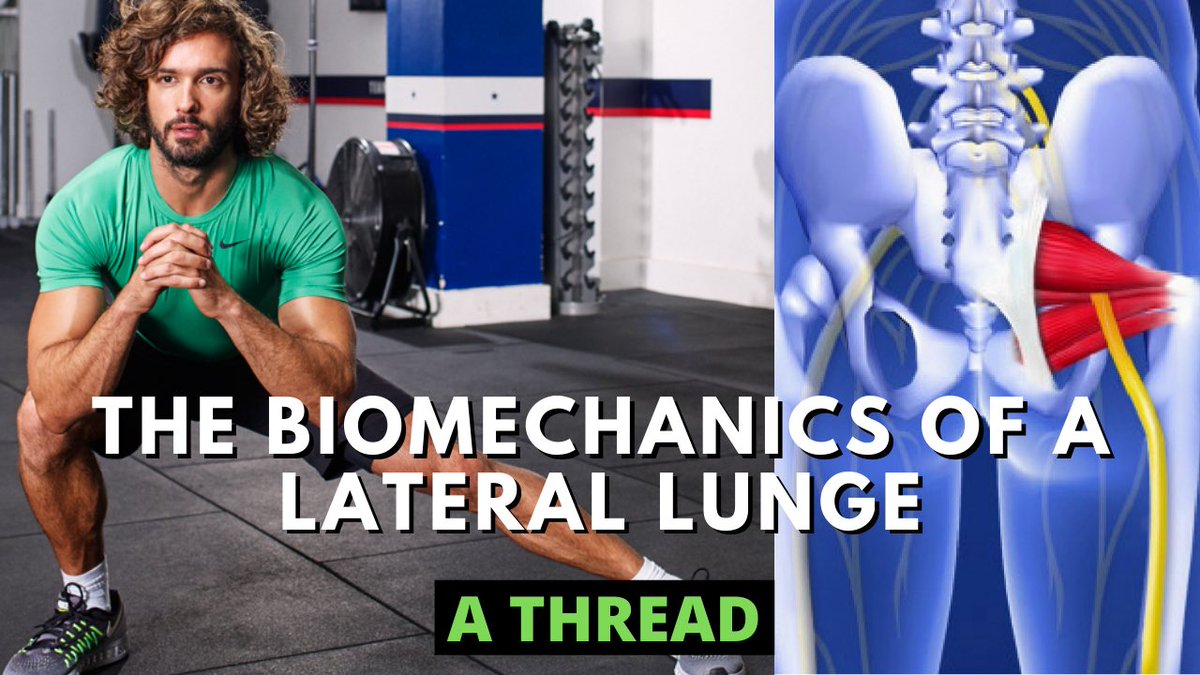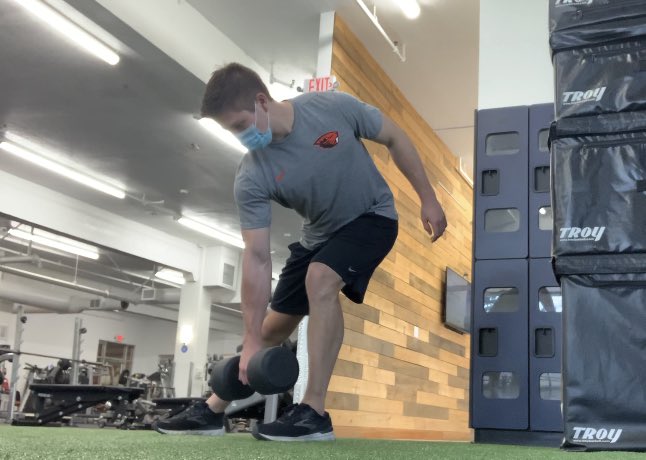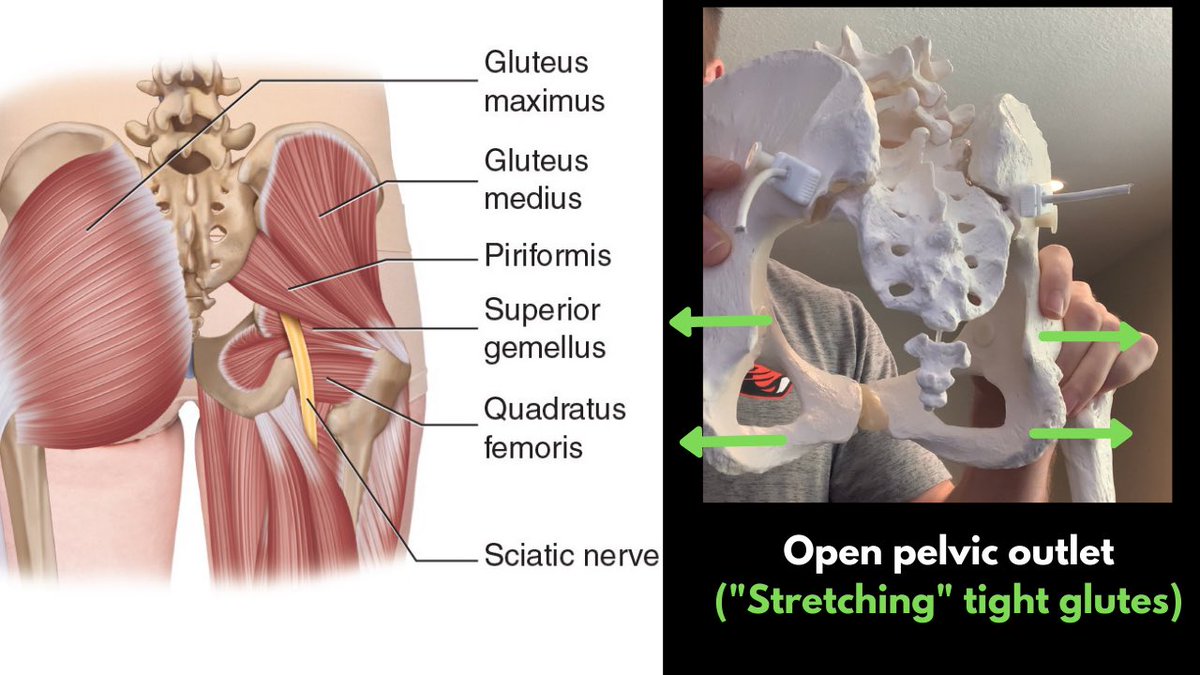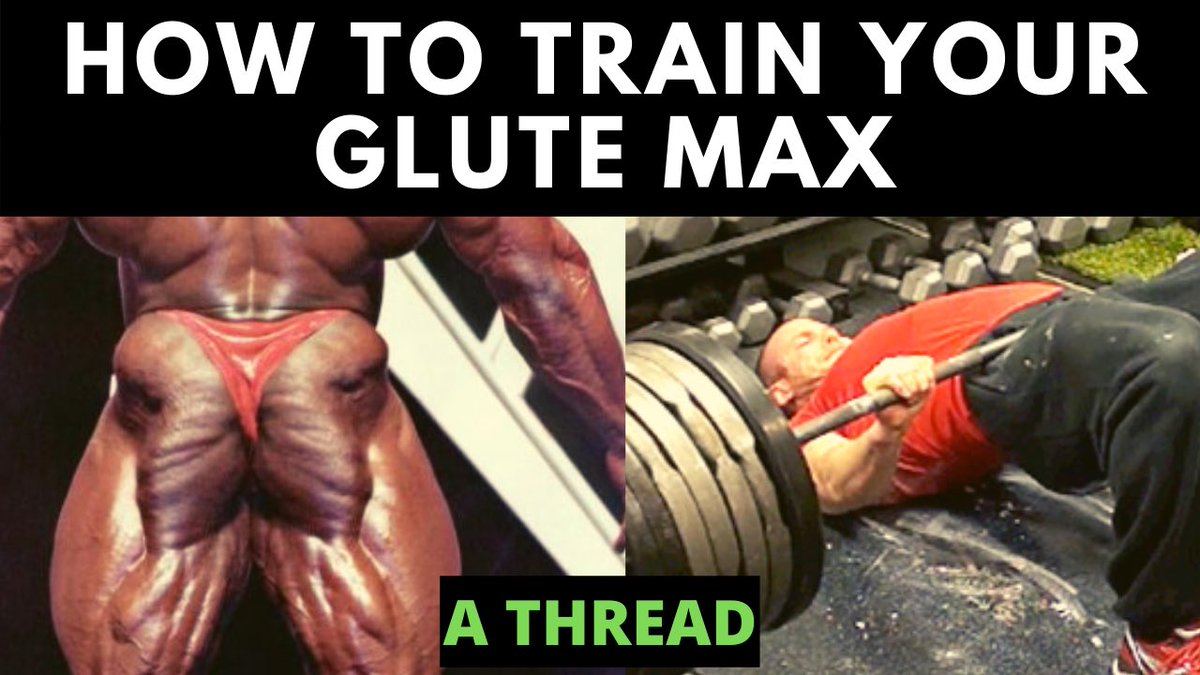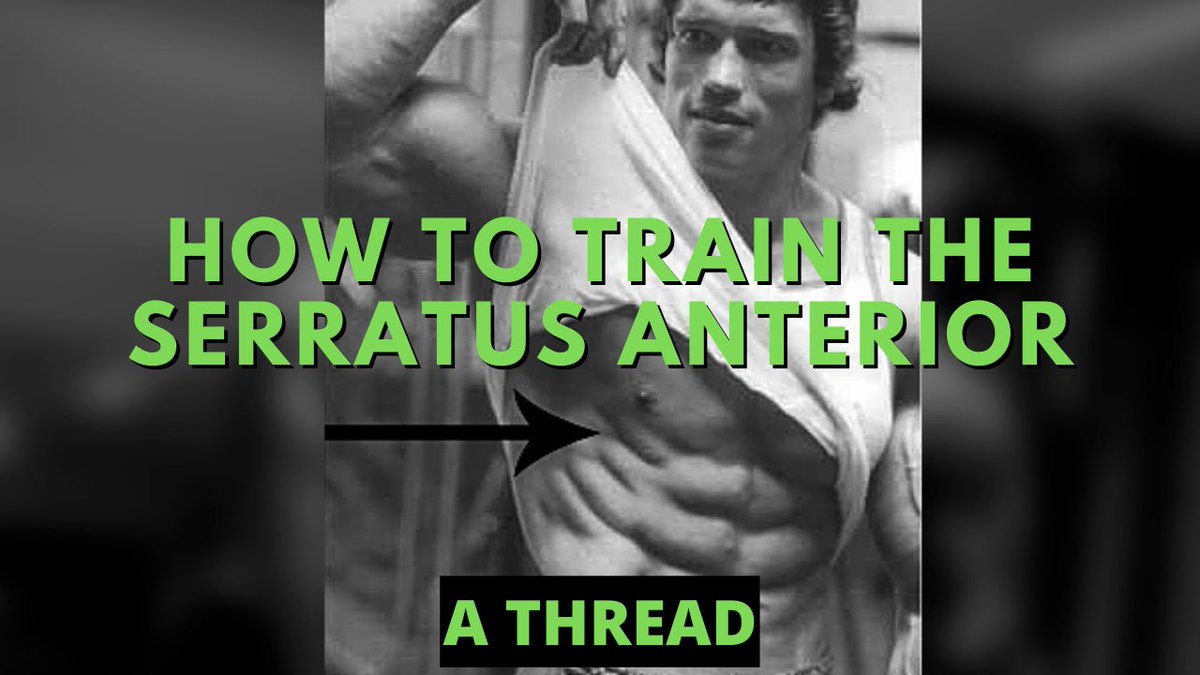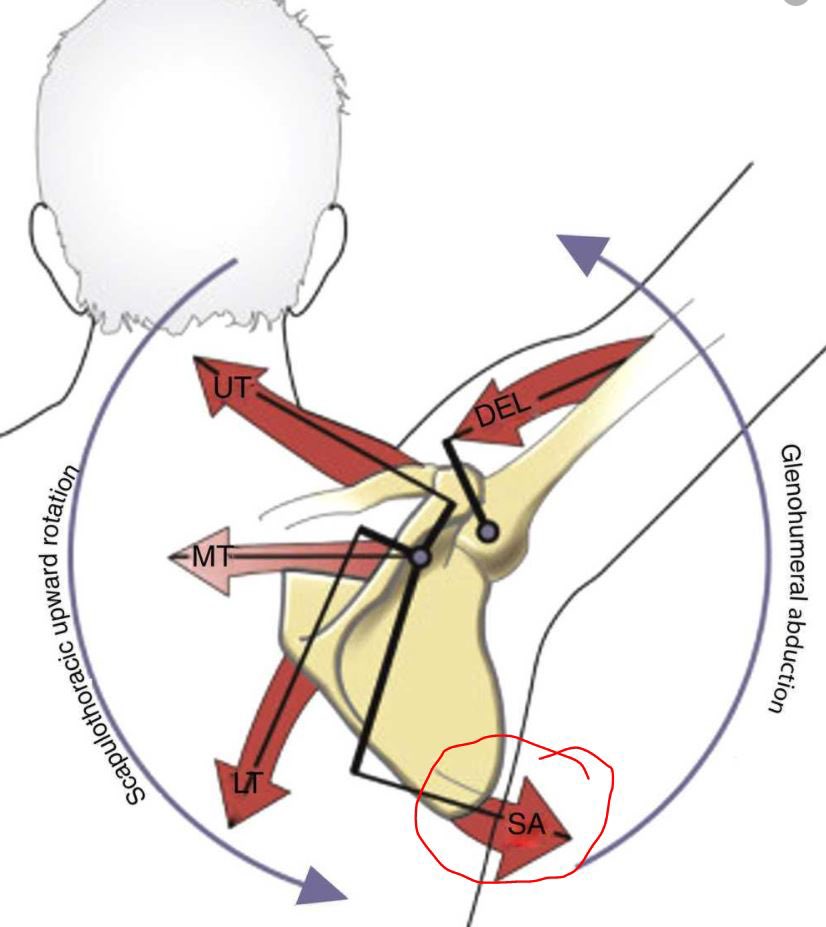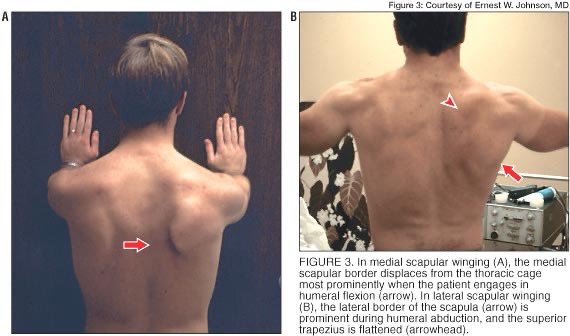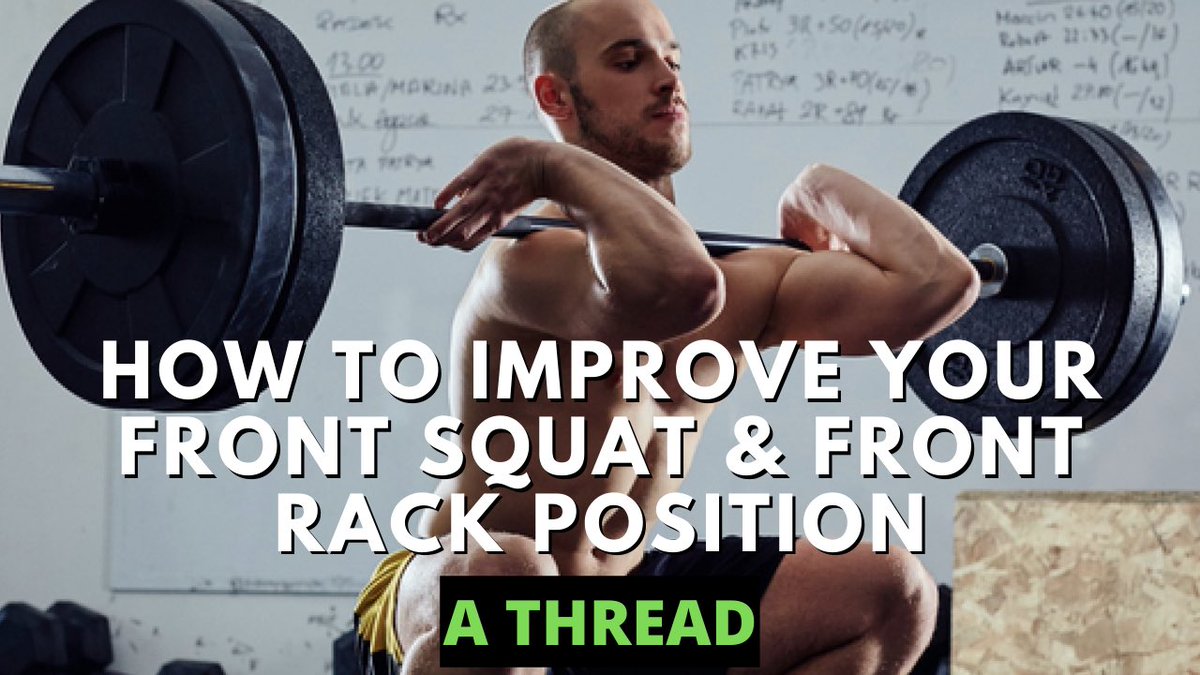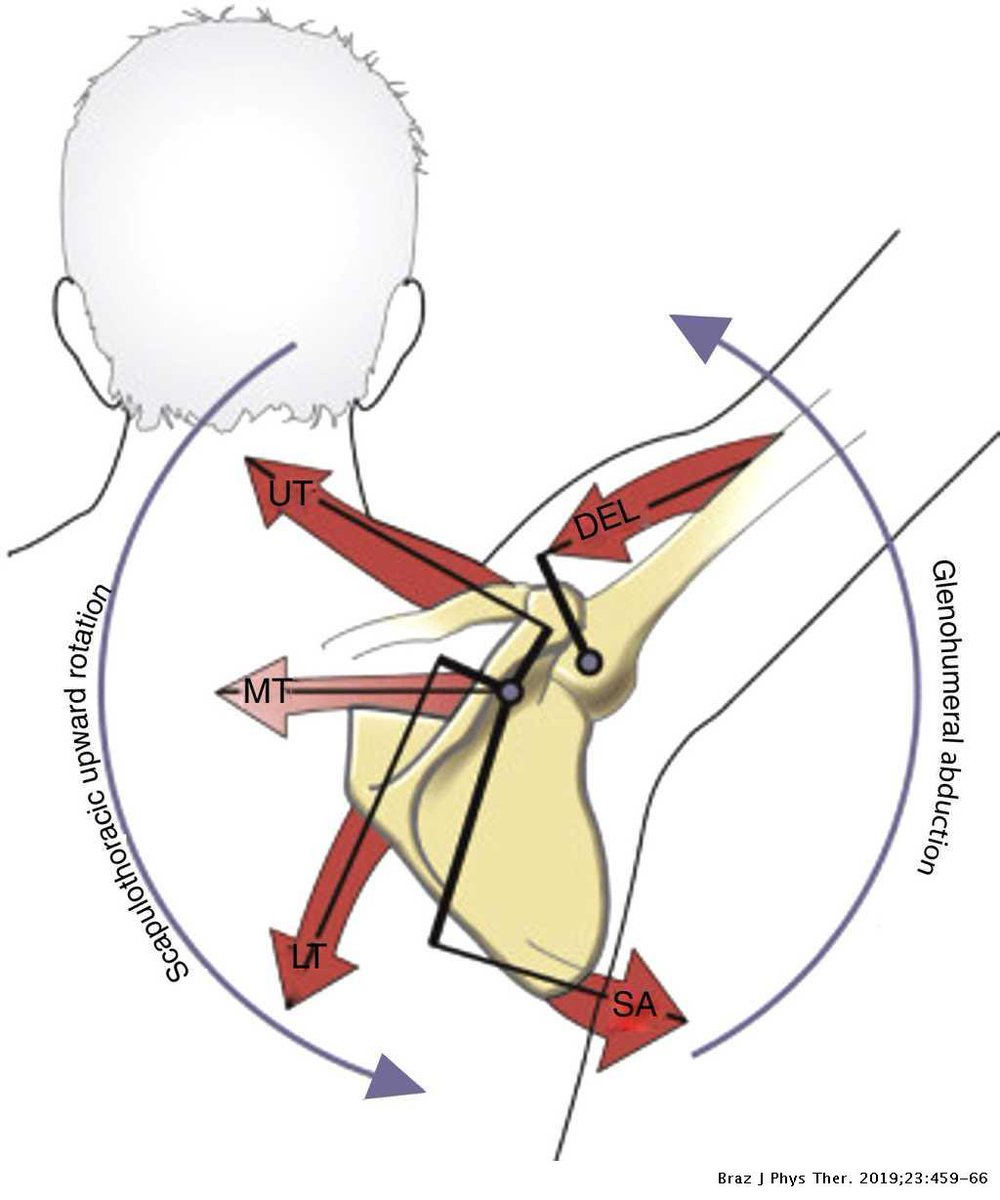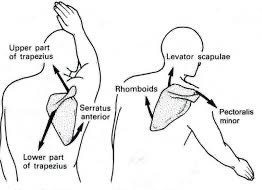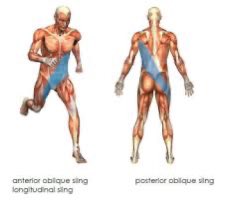
A thread on how to improve hip internal rotation
If you want to:
- Be agile
- Be fast
- Get through the sticking point of a squat
- Deadlift
You want to have adequate hip internal rotation (IR).
However, in my experience it is often missing to some degree in many people.
If you want to:
- Be agile
- Be fast
- Get through the sticking point of a squat
- Deadlift
You want to have adequate hip internal rotation (IR).
However, in my experience it is often missing to some degree in many people.

The hip musculature responsible for hip IR are primarily:
- Adductors
- Inner Hamstrings
- Anterior fibers of the Gluteus Medius
- Tensor Fasciae Latae
- Adductors
- Inner Hamstrings
- Anterior fibers of the Gluteus Medius
- Tensor Fasciae Latae

In human movement, IR is necessary for mid-stance when we have our bodyweight on one leg and we need to propel it to the next leg. In cutting, we obviously need hip internal rotation to drive out of it effectively in a propulsive manner. 
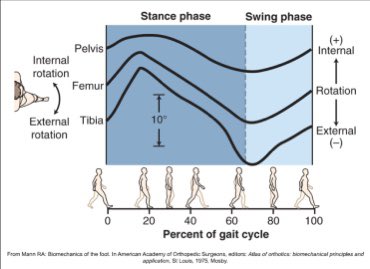
Most of these muscles are recruited maximally at ~90 degrees of hip flexion, which is essentially when your thigh is parallel to the floor in a squat (Neumann, 2010). 

So why might we see a knee valgus in a squat or cut in deep amounts of hip flexion?
Well maybe the individual doesn’t have proper IR, so that knee collapsing in is the body’s attempt to find that necessary IR.
Well maybe the individual doesn’t have proper IR, so that knee collapsing in is the body’s attempt to find that necessary IR.

We can lay there and do “hip IR” stretches all day, but that doesn’t take into account that skeletal position dictates muscular function.
In my opinion a better approach would be to position the skeleton in a manner advantageous for hip IR, then integrate musculature we want and
In my opinion a better approach would be to position the skeleton in a manner advantageous for hip IR, then integrate musculature we want and

train it in that position.
One basic example of this in a ground-based activity would be a PRI Adductor Pullback. This is ideal for those who struggle to get any IR or sensory awareness of their adductor working as an internal rotator.
One basic example of this in a ground-based activity would be a PRI Adductor Pullback. This is ideal for those who struggle to get any IR or sensory awareness of their adductor working as an internal rotator.
As for exercises, we can use a front foot elevated split squat with a “forward hip shift” (I talk you through it in the video)
The elevation will put us in more hip flexion to allow for more time spent in deeper levels of hip flexion for more internal rotation activity.
The elevation will put us in more hip flexion to allow for more time spent in deeper levels of hip flexion for more internal rotation activity.
The contralateral (opposite-hand) load serves as a counterbalance to help us shift into that hip.
You can read more on on a forward hip shift here:
You can read more on on a forward hip shift here:
https://twitter.com/conor_harris_/status/1288613661859184640
Hinging actions usually require concentric-force producing actions about 90 degrees of hip flexion so that makes them ideal to train IR.
Here is an example of a lateral hinge focused with the foot and toes elevated to help “sink” into IR.
Here is an example of a lateral hinge focused with the foot and toes elevated to help “sink” into IR.
Finally, a goblet squat to a 90 degree box with a ball between the knees is also ideal. This will help us concentrically activate the adductors & IR muscles.
I should note I am not squeezing it as hard as I can. I am simply holding it there. That’s all it takes.
I should note I am not squeezing it as hard as I can. I am simply holding it there. That’s all it takes.

You can add an isometric hold just off of the box for some extra juice.
Hopefully that helps you get some ideas.
The takeaway points:
- We need internal rotation to produce force
- The body likes to compensate to find what it lacks
- Skeletal position drives muscular function
Hopefully that helps you get some ideas.
The takeaway points:
- We need internal rotation to produce force
- The body likes to compensate to find what it lacks
- Skeletal position drives muscular function
And if you're interested, here is a thread that helps explain a test I use to determine if there is a lack of hip IR. This is not the only test I would use, but it gives an idea.
https://twitter.com/Conor_Harris_/status/1270416677641916416?s=20
• • •
Missing some Tweet in this thread? You can try to
force a refresh

